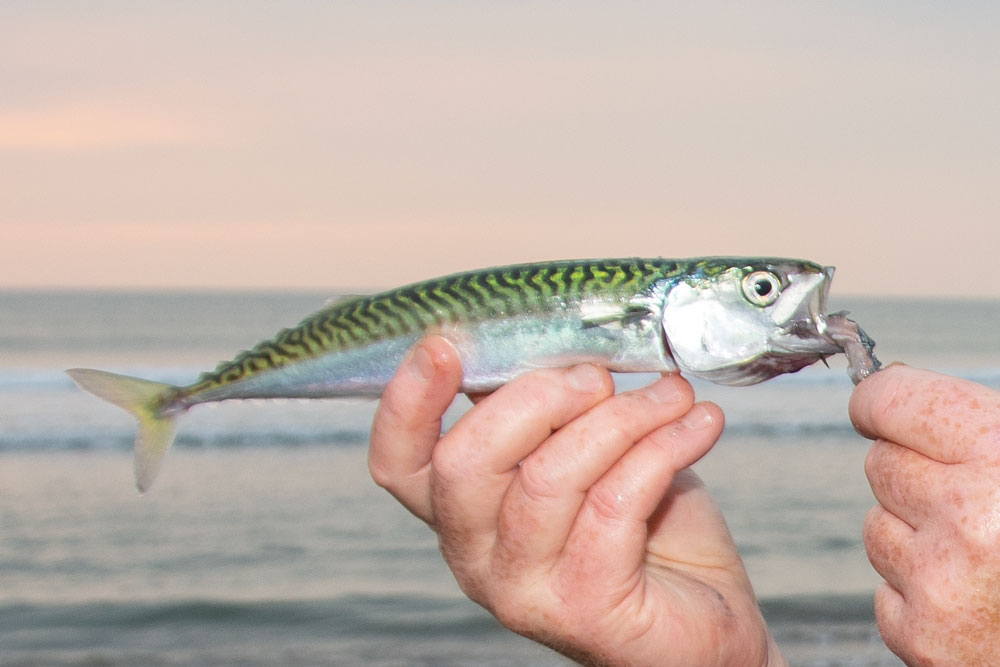Shore mackerel fishing is a skill well worth having. It can keep the family amused for a few hours when on holiday, catches fresh and tasty fish for the summer BBQ, but also is an important tool for putting top quality bait in the freezer, or securing fresh bait for immediate use. With overall numbers of mackerel said to be down in many areas over recent years, getting the strategy exactly right can make the difference in catching just the odd one or a lot.
Mackerel Fishing Season
The mackerel season used to be clear-cut, running from April through to November. Nowadays, you can catch the odd mackerel off the Southwest and West Wales rock ledges in December, January and February due to warming seas. That said, the rocks normally produce with improving consistency, in April, with general shore stocks being at their best from late June to mid-October.
It tends to be the smaller Joey mackerel and the fish that average between 8 and 10-inches that show through the summer, but come late August through September and October, larger fish between 1lb and 2lbs can move inshore. These bigger fish work under the main mackerel shoals or in much smaller shoals tight to the seabed.
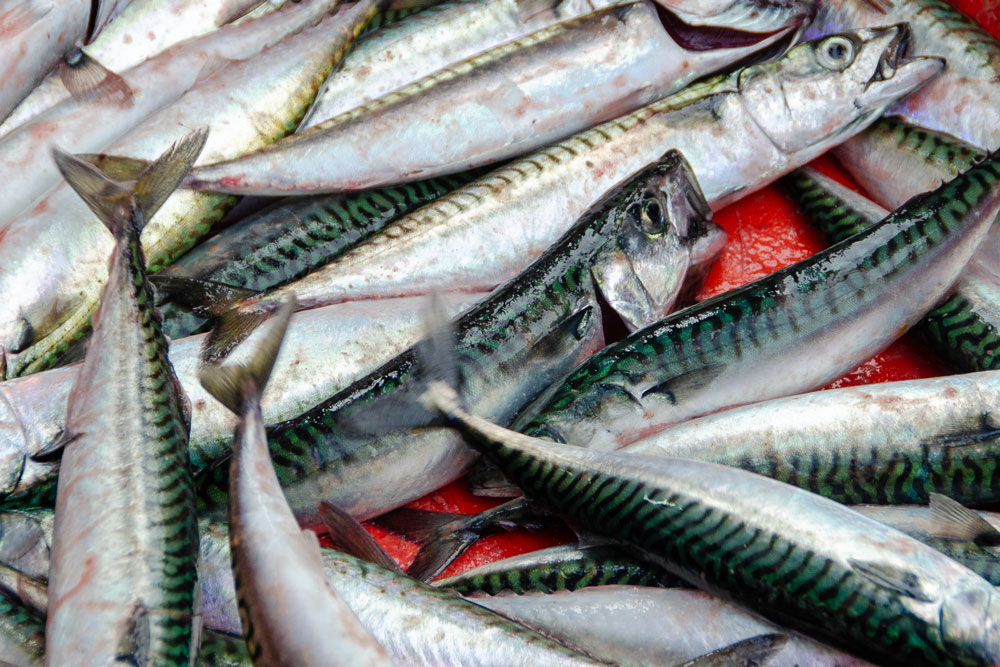
Habitat
Mackerel are found throughout the season off rock marks that give into deeper water over 20-feet, also from land-based piers, breakwaters, and harbour walls. Basically, the more consistent the depth of water is, the greater the chance of mackerel. Marks that dry out, such as shallow harbours, are less reliable and only likely to produce on the bigger tides towards high water.
By mid-June, but more likely in July, August, and September for numbers, they can also be caught off beaches, especially deeper steep-to beaches, but also surf beaches even in shallow water. During this high summer period, they will also move into small estuary mouths.
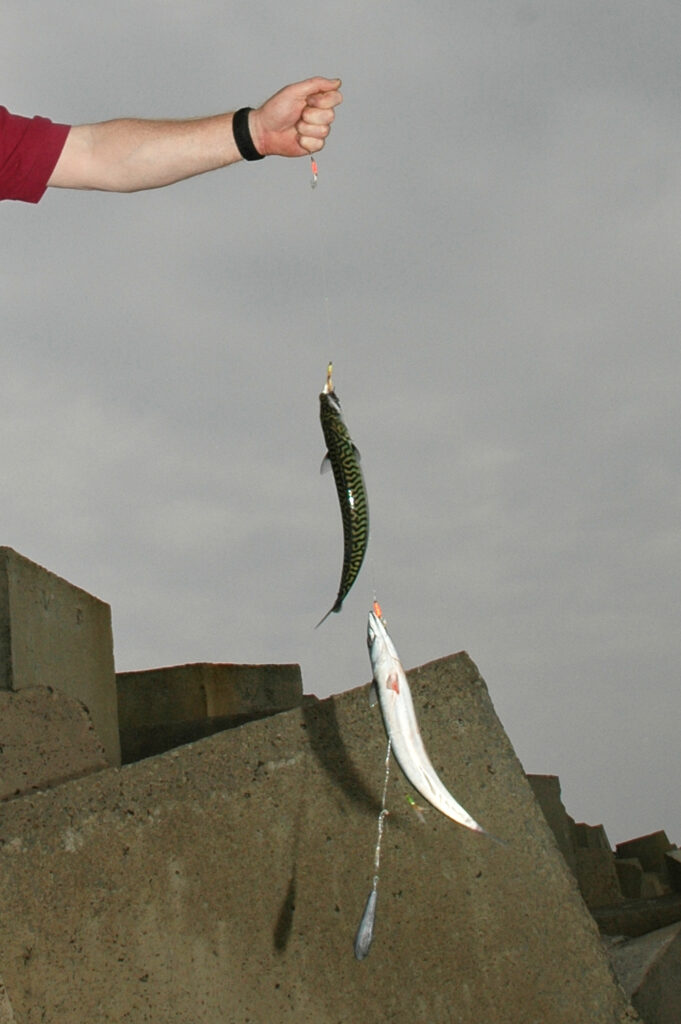
Weather and Tides
Mackerel do not like rough seas, even in deeper water. They move inshore during longer periods of calm, warm, settled weather with slight seas. The longer the calm period, the better the prospects are. On bright sunny days they will be deeper down in the water column. On overcast days, they move up in the water and will be mid-depth or higher.
Mackerel like some run in the water, so off the rock ledges the best period of the flood tide will be the middle three hours of the flood, with the period either side of slack water less likely to produce fish. Ebb tides can also see fish, but the feeding period will be the middle four hours of the outgoing tide. Breakwaters, piers, and harbour walls also fish best in the middle hours of the flood but will be less reliable on the ebb with the fish sometimes moving back out to sea quickly.
Beaches tend to fish best during the middle flood period to high water, with only very deep beaches likely to give fish on the ebbing tide.
Mackerel feed throughout daylight but feeding peaks at dawn and dusk. They do not feed during the hours of darkness.
Tackle
There’s no need for heavy tackle. A rod around 12ft-to-12ft 6in rated up to 5ozs with an 8000 sized fixed spool reel loaded with 30lb braid is perfect for most mackerel fishing when numbers are more important than sport. Rods from our AXIA range are inexpensive and do the job for this type of fishing, such as an AXIA 12ft Beachcaster.
You can even buy a reasonable price kit such as the AXIA Basher combo, which gives you a rod, a reel loaded with line, a Stinger lure and a set of Tinsel Feathers in one convenient package.
Feathers such as the Axia Flash Feathers and the Tinsel Feathers in size 2 catch fish in all conditions.
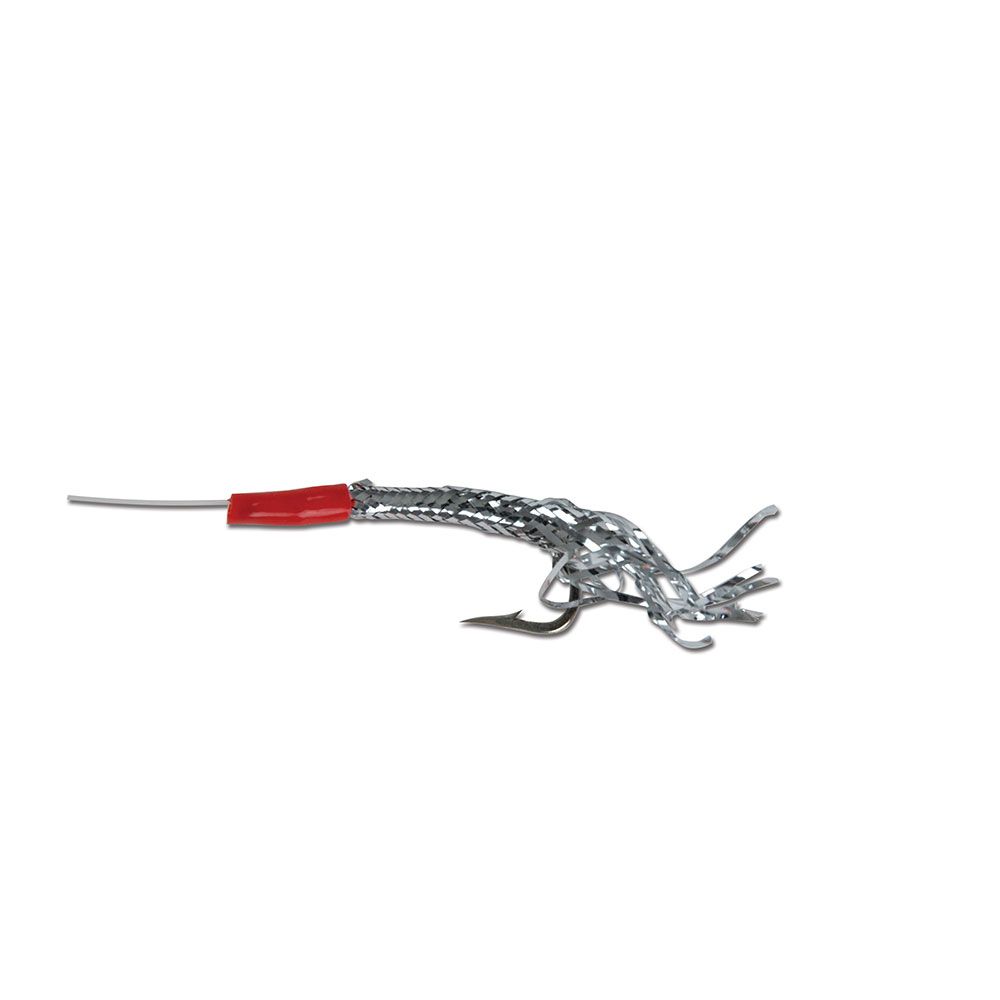
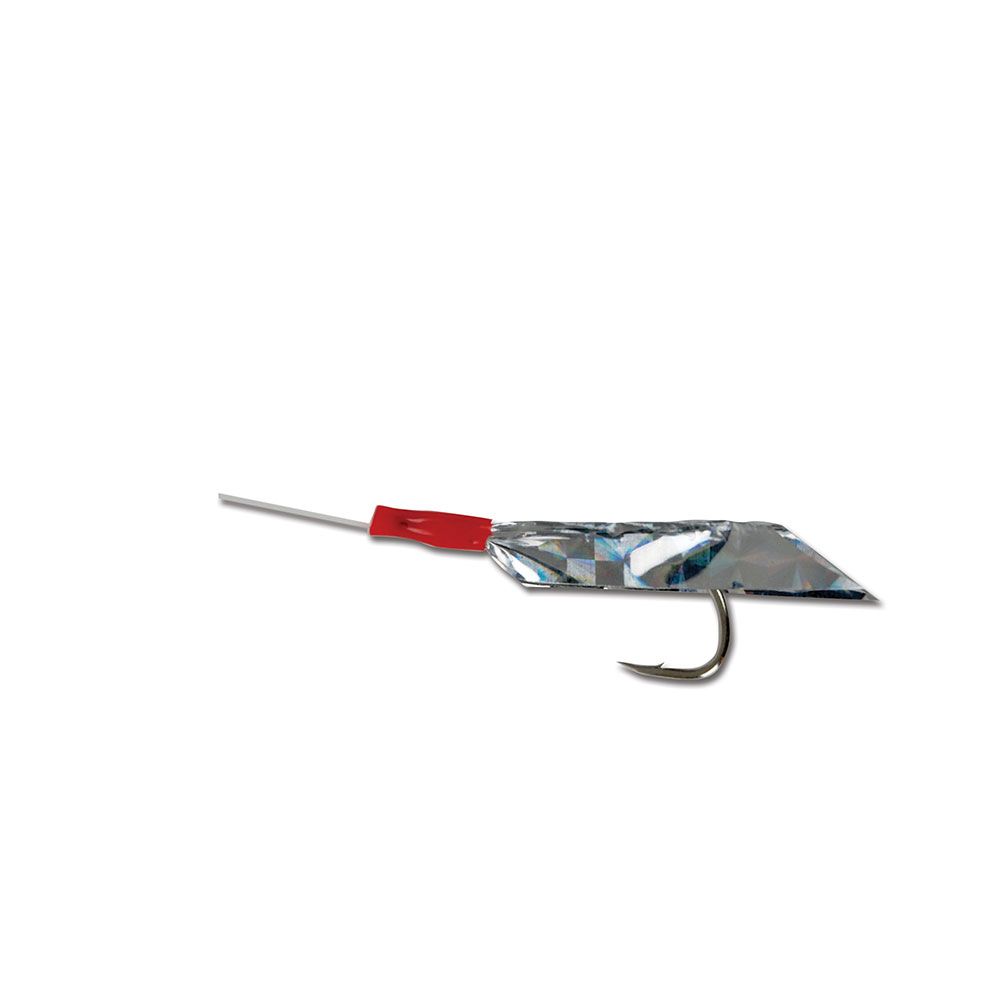
Alternatively, use float gear. Tronixpro makes the ready to fish Float Kit in different sizes, with the 18g or 35g both ideal for average conditions, and the heavier 56g for more choppy seas and deeper water.
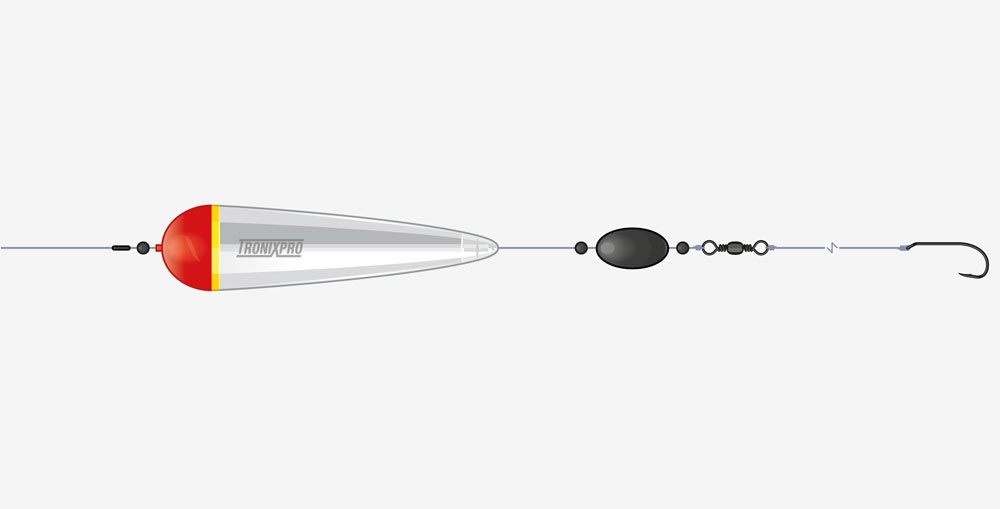
If you prefer to set up your own float tackle, it’s easy. Choose one of the Tronixpro Loose Floats, again 18g to 35g is a good start. Slide a 5mm bead then the float onto the line followed by a ball weight big enough to cock the float, then a 5mm bead. To the tag end of the line, tie on a size 6 rolling swivel. Add 18-inches of 12lb to 15lb AXIA Fluorocarbon and tie on a size 6 to 2 hook, depending on bait size. Above the float and top bead, use a length of Tronixpro Rig Gum to tie a 6-turn Grinner knot over the main line. This will slide up and down and allows you to set the depth the float sits and the bait fishes at.
Baits
When float fishing, small mackerel and squid strips are by far the most consistent baits. Cut the strips about 1 to 1.5-inches in length. Nick the hook through one end of the strip once to let the strip move freely in the water. Strips of sandeel work too!
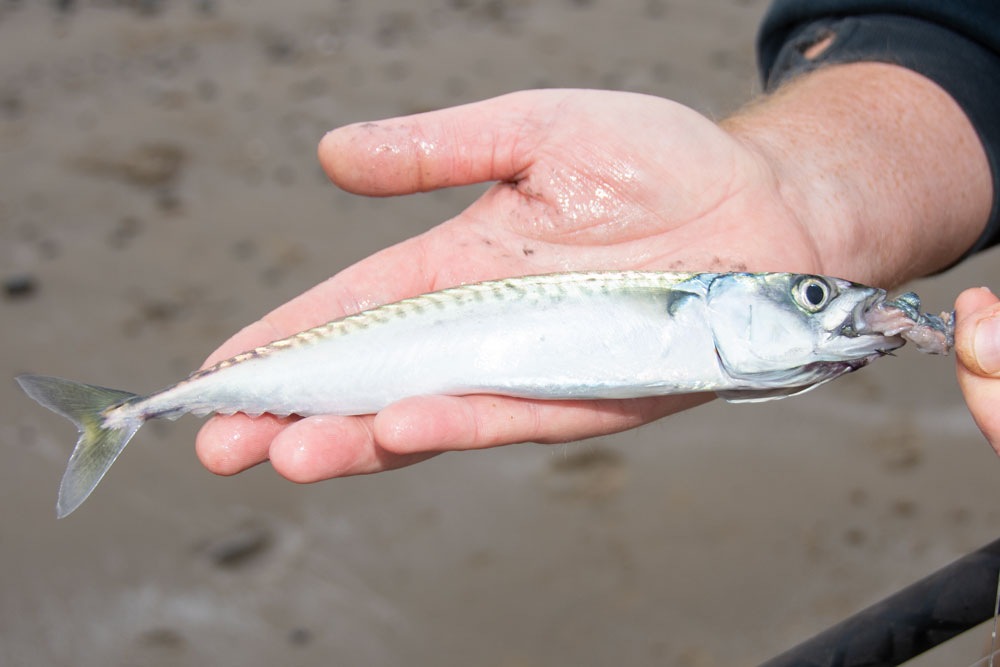
Method
When casting mackerel feathers, use a lighter lead between 2 and 3ozs. The heavier the lead, the faster it will fall, and it’s better if the feathers' descent is more controlled. Count the lead down, say 10 seconds, then start to lift the rod tip then drop it, and as the rod tip drops retrieve a little line. This sink and draw action works the feathers like a small shoal of baitfish rising and falling in the water. If you don’t get bites, count to 15 on the next cast and keep going deeper by five counts until you find the fish. You’ll have to do this throughout the session, as the shoals will rise and fall in the water column as the tide and light action through the water change.
Catches can be improved by using a heavy spinner, pilk or small chrome coloured pirk instead of the lead weight. The chrome flashes in the water and helps draw in the mackerel towards the feathers. The bigger lure can also take a bigger predator or one of the bigger mackerel working below the main shoals. The AXIA Bass Wedge, Wave Pirk larger sizes of Casting Lure are ideal for this.
When float fishing, set the depth the bait fishes at roughly half the overall depth, then move it up and down until the bites are found. Lift the rod tip to the side to move the float occasionally as this will, in turn, lift and move the bait and this can induce a fish to take it.
When fishing off breakwaters, the mackerel are often found on the edge of the tidal current that comes around the end of the breakwater. Cast your feathers and float here and work this edge thoroughly.
On the rocks, try to identify areas where the tide quickens, such as where a small island or rock sits up from the surface just out from where you’re fishing. The same applies where a rocky headland juts out into the tide.
On beaches, it can be more visual, with you looking for birds working and especially for the splashes on the surface of the feeding mackerel as they work up the beach. Don’t go running after the mackerel. If you catch one or two mackerel from one shoal, wait a few minutes and another shoal will be along directly. You’ll also typically see the whitebait they’ve pushed ashore flapping on the edge of the tide line as a giveaway the mackerel are tight inshore.
